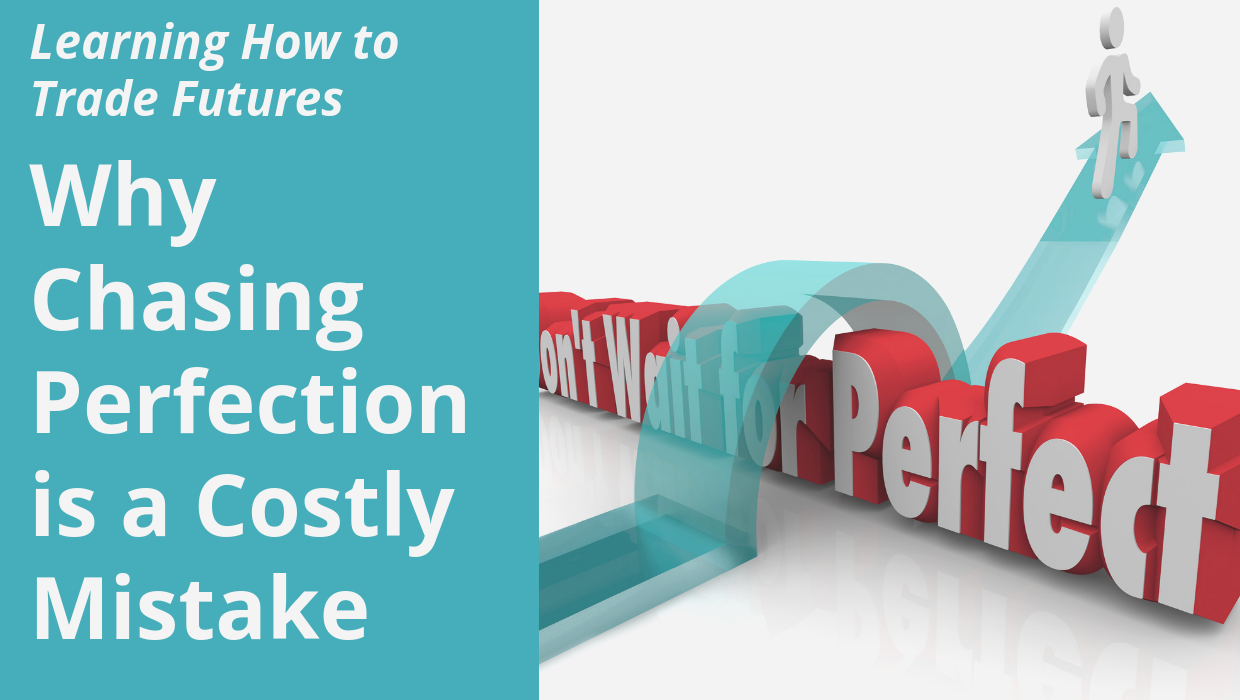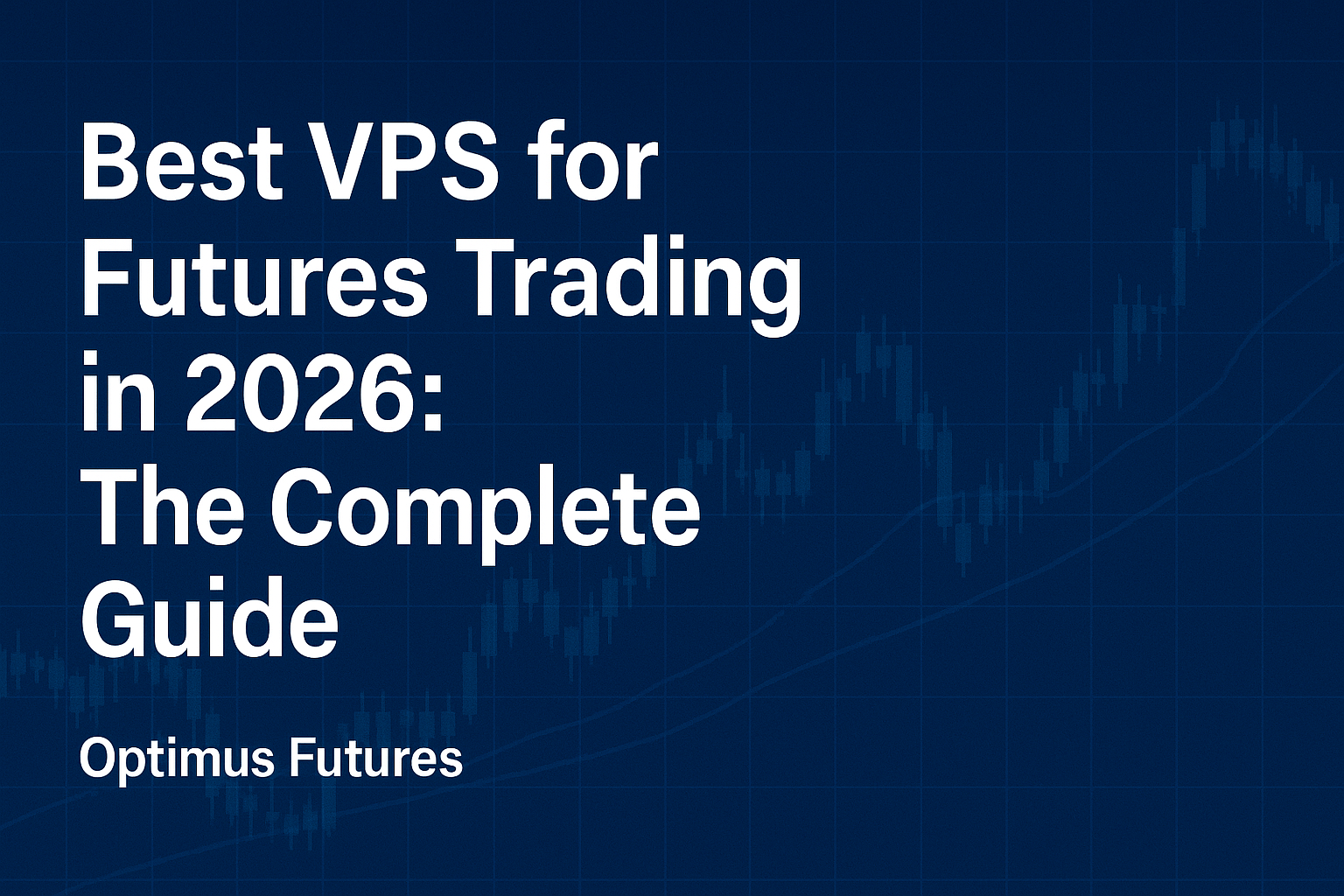This article on Learning How to Trade Futures is the opinion of Optimus Futures
For anyone learning how to trade futures, not settling for anything less than perfection sounds very appealing. The quest for the ultimate trading system, the hunt for the perfect trade management solution, the search for the flawless broker, the need for consistent winners – these are all healthy objectives that will keep a trader on their toes, always pushing to be better. However, take it a little too far and you are perhaps flirting more with danger and detriment than anything else. Let us explain why.
The Markets are Not Perfect
First off, becoming the perfect trader with the perfect trading method is virtually impossible–an unrealistic and potentially damaging goal. The primary reason has to do with the very own imperfect nature of the markets themselves.
If you have traded for any length of time, you are likely already aware of how markets can be very unpredictable. Volatility levels can vary, and news and external events can obscure the market’s directionality to such an extent that any clear outcome may be extremely hard to foresee, let alone factor into your trading plan. For instance, the market may appear to respect a support and resistance level to the tick on one occasion and roughly react “around the level” on other occasions, making it difficult to accurately place your market entries or exits.
As a trader, your biggest challenge is to be able to maneuver past these “daily recurring” imperfections. Believe it or not, these “imperfections” are the very elements that make trading a potentially profitable endeavor in the first place! Price uncertainties, imbalances, and inefficiencies form the basis of interactions between the buyers and the sellers. They comprise the market opportunities that traders exploit to generate profit.
If you think about it from this perspective, chasing perfection in the markets can come at a high opportunity cost. In contrast, the practice of adapting to imperfect scenarios is what can help you develop an edge in the markets. The agility to adapt to uncertain conditions is what eventually constitutes excellence and success in a market that is rife with imperfections on multiple levels.
Searching for Perfection Can Lead to Frustration
A constant quest to be the perfect trader can be extremely exhausting and frustrating. Furthermore, it’s unnecessary; a waste of time and energy. One of the primary reasons many traders do not make it past their first few years of trading is their very own unrealistic expectations of themselves. First, expect a long winding learning curve. That means time and effort. It also means errors and occasional failures. Finding a trading edge does not come cheap nor does it stem solely from success. Don’t underestimate the value of making mistakes, for you may learn more from them than from your successes.
The more you know, the more you realize just how much you don’t know. You will learn from your mistakes while making new ones. It comes with the territory. It’s perfectly okay to strive for excellence, but not okay to strive for perfection. Carrying a heavier load of burden beyond making the best effort can leave you agitated, frustrated, more prone to heavy losses, and more prone to dropping out of the markets altogether.
Remember: excellence trumps perfection, as the pursuit of perfection will often trump the likelihood of achieving excellence.
Unrealistic Expectations Can Stretch Out the Learning Curve
You don’t have to “chase perfection” to get caught up in the perfection trap. You may just be shooting to reach a higher level of trading performance–one that’s slightly higher than your current performance level, but one that you may not be capable of achieving right at that very moment. In this case, you are just harboring unrealistic expectations.
Perhaps you are constantly jumping from system to system, method to method, to find some kind of “Holy Grail.” If so, you may find yourself putting the ‘pedal to the metal,’ exceeding your limits of research and development to dangerous levels, running simultaneous tests of varying trading styles and / or alternative trade management methods. Slow down!
Even though we are not discouraging testing newer styles, or making amendments to your existing strategy, it’s the way you go about it that matters the most. Learning how to trade futures happens on multiple levels, from the most basic to the most advanced. Learning on multiple levels entails multiple iterations–successes and failures–which implies time. Lots of time.
The idea is to find the right balance between keeping it simple while making small and multiple iterations to improve and enhance your trading style, and ultimately, your results.
Remember that excellence is not about being able to predict the outcome of a trade. It’s about knowing what to do regardless of the potential outcome.
And that brings us to the next point:
It Can Lead to Over Complication
It is no coincidence that seasoned traders are often found analyzing clean minimalist charts looking for old school factors and elements that many traders dismiss as too basic, clichéd and redundant. It’s about economy of means; or perhaps you are familiar with the cliche “K.I.S.S.” (keep it simple stupid).
New traders, on the other hand, can often be found staring at a striking assemblage of complex indicators laid on top of each other, or compressing loads of data or multiple charts onto a large screen.
The need for the perfect trading method can often result in complicated trading styles that are relying on far too many signals and factors. The greater the reliance on complexity, the greater the reliance on luck (because you’re going to need it).
Over-complexity is perhaps a leading cause of why so many newer traders struggle to find success in this business. Inexperience often calls for high levels of objectivity toward solid data. But more data (and objectivity) isn’t necessarily better.
The problem with that approach is that it can quickly become overwhelming and stressful. You can’t accurately analyze multiple targets that are always changing by the minute (or second)! And markets, or rather, factors affecting the markets, are constantly changing.
A pin bar at a swing high could be indicating a reversal but the moving averages may still have not crossed over yet, the MACD might still be above the zero line, the new flashy indicator you bought for $200 might not yet have turned red just yet, the Ichimoku cloud may scream trend but the Renko chart shows no movement.
Some traders go through this mad routine, believe it or not. It makes you wonder if it’s the “chart” that needs to be analyzed or if it’s something else (on the Freudian sofa).
Sticking to simple elements in making trading decisions certainly does not make you a perfect trader (because nothing can), but it can serve as the starting point toward achieving a state of excellence in your craft.
The Bottom Line
Learning how to trade futures successfully is a monumental commitment that can run through the life of your trading career. And regardless of your experience in the business, it will always be the centerpiece of your success. However, it is vital to strike a good balance between your day to day trading endeavors and your research and development activities, so as to avoid the above-mentioned pitfalls, mistakes and losses.
Chasing perfection as a trader can come back to hurt you in several ways; ranging from negative emotions, compromised trading results, and overly complicated trading environments. As is the case with many aspects in life, keeping it simple (in trading) may well be the only perfection that you should actually be chasing.
Finally, let’s take some advice from the French philosopher Voltaire via General George Patton: “The perfect is the enemy of the good.” And often, you’ll find that “the good,” executed vigorously with an aim toward improvement, progress, and achievement, is often “good enough.”
There is a substantial risk of loss in futures trading. Past performance is not indicative of future results.




